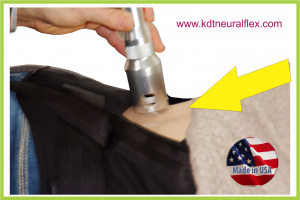Analysis of 2-stepTraction: FE modeling
Part 2: Kyungsoo K et al J Phys Ther Dec(6) 2014
There are 2 aspects of this study that make it interesting and pertinent. It uses FE (finite element) spine modeling and live patient analysis. It doesn’t attempt to assess the “clinical outcome” of spinal traction (it appears the authors assume it works effectively). They assess the ‘strain’ on the structures during axial traction (1/3rd BW) then a re-assessment upon a “local”, intersegmental P-A pressure. This ‘local’ extension equaled approx. 7-8mm. The premise is that axial tension can ‘strain-load’ the posterior disc fibers (especially true in moderate degeneration) and this can result in further injury…certainly not always or in everyone but it is a consideration. By adding a slight inward pressure at the L5/L 4, L5/S1 level the annular strain was dissipated without adversely affecting intradiscal pressure.
4, L5/S1 level the annular strain was dissipated without adversely affecting intradiscal pressure.
The “open” Versa-belt was designed to allow time savings with Laser (or any modality) during traction as well as allowing this hands-on, manual ‘interface’. I have always been dumbfounded by the use of excessive forces & motions during typical F/D treatments (and I am well aware I have injured many patients overdoing it). This study gives some real information on the actual depth of additional intersegmental motion that may actually be needed as well as the FE assessment that the posterior disc fibers stand to be ‘over-strained’ in many cases if more than 1/3rd BW is imposed.

Leave a Reply
Want to join the discussion?Feel free to contribute!